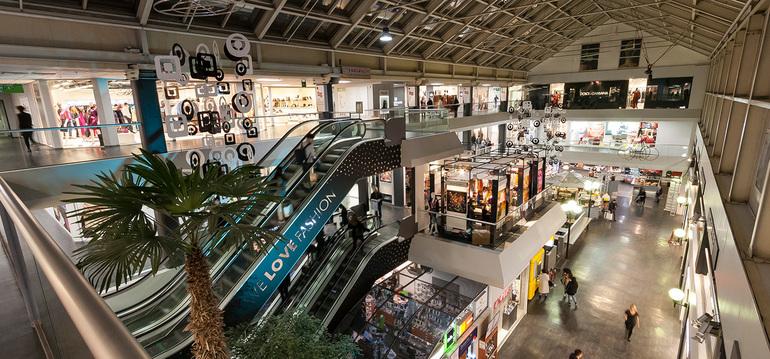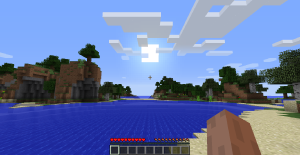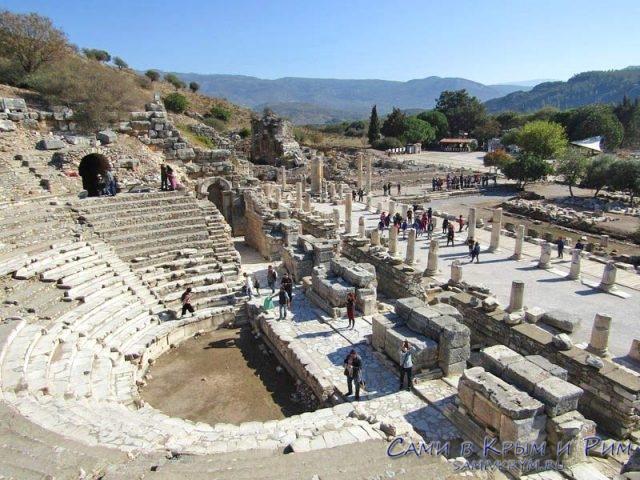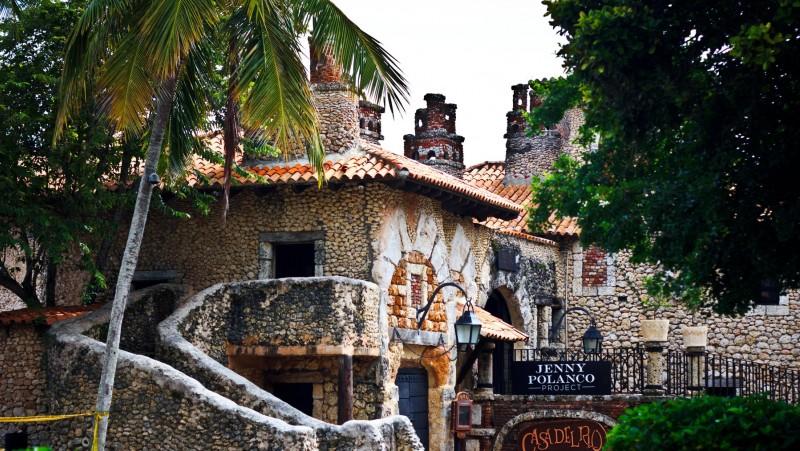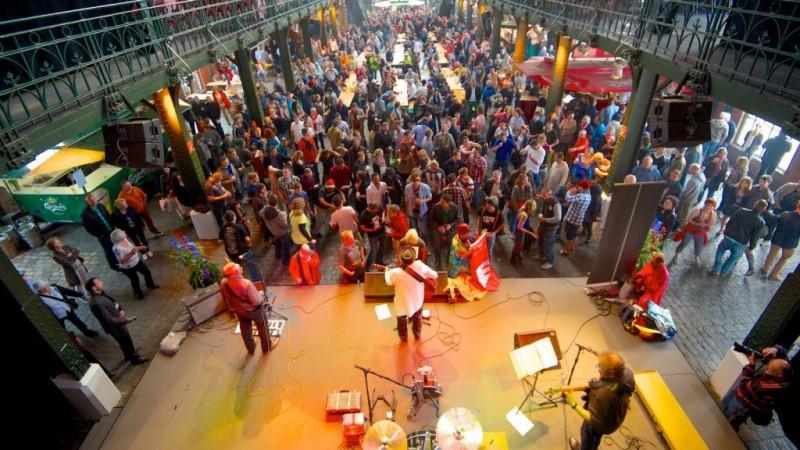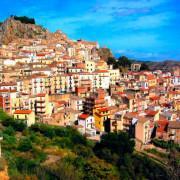Сад специй + каменный город + дворец марухуби
Содержание:
История
Местность была населена приблизительно за три столетия до того, как в 1830-х годах появились каменные постройки.
Узкая улочка в Занзибаре.
Город был торговым центром восточноафриканского побережья между Азией и Африкой перед колонизацией материка в конце XIX века, после чего центр торговли сместился в Момбасу и Дар-эс-Салам. С 1840 до 1856, при Саид ибн Султане, здесь была столица Оманской империи. Основными экспортируемыми товарами были специи, в частности гвоздика. Многие годы Каменный город был крупнейшим центром работорговли; рабы, поступающие из континентальной Африки поставлялись на Средний Восток. На месте прежнего рынка рабов построен англиканский собор, но несколько клеток сохранилось.
Город также был отправной точкой для многочисленных европейских исследователей, в особенности португальских, и колонизаторов в конце XIX века. Дэвид Ливингстон использовал Каменный город как базу при подготовке своей последней экспедиции в 1866 году. Дом, сейчас носящий его имя, был предоставлен ему султаном Сейид Саидом. Здесь селились иммигрантские сообщества из Омана, Персии и Индии. Они, в основном, занимались торговлей, или, как в случае с оманцами, управляли островом и зависимыми от него территориями.
Overview

Stone Town panorama
The heart of Stone Town mostly consists of a maze of narrow alleys lined by houses, shops, bazaars and mosques. Since most streets are too narrow for cars, the town is crowded with bicycles and motorbikes. The seafront has wider streets and larger, more regularly placed buildings.
Stone Town’s architecture has a number of distinctive features, as a result of Arab, Persian, Indian, European, and African traditions mixing together. The name «Stone Town» comes from the ubiquitous use of coral stone as the main construction material; this stone gives the town a characteristic, reddish warm colour. Traditional buildings have a baraza, a long stone bench along the outside walls; this is used as an elevated sidewalk if heavy rains make the streets impracticable, or otherwise as benches to sit down, rest, socialize. Another key feature of most buildings is large verandas protected by carved wooden balustrades. The best-known feature of Zanzibari houses are the finely decorated wooden doors, with rich carvings and bas-reliefs, sometimes with big brass studs of Indian tradition. Two main types of doors can be distinguished: those of Indian style have rounded tops, while those in the Omani Arab style are rectangular. Carvings are often Islamic in content (for example, many consist of verses of the Qur’an), but other symbolism is occasionally used, e.g., Indian lotus flowers as emblems of prosperity.
Stone Town is punctuated with major historical buildings, several of which are found on the seafront; these include former palaces of the sultans, fortifications, churches, mosques, and other institutional buildings.
Art Deco detail of the Cine Afrique in Stone Town
While Stone Town was included in UNESCO’s World Heritage Sites in 2000, this designation does not provide complete protection for the town’s heritage. Despite the establishment of a Conservation Authority, about 80% of the 1,709 buildings of Stone Town are in a deteriorating condition. As coral stone is very friable, frequent maintenance is needed for most of these buildings. Some major restoration projects (especially on the seafront) have been done in recent times by the Aga Khan Trust for Culture (AKTC).
In the manga
In The Electric Tale of Pikachu manga
Stone Town appears in the manga series The Electric Tale of Pikachu, which is based on the anime. Stone Town appears in the chapter To Evolve or Not to Evolve, That is the Question!, which is in turn based on The Battling Eevee Brothers. In the manga, Stone Town is located on an island named Dream Island.
Ash, Misty and Brock travel to Stone Town so that Misty could purchase a Water Stone for her Poliwhirl. Although she could not afford a stone, she was given one by Mikey, who gave it away because he was being pressured to evolve his Eevee to join the exclusive club «The Knights of the «E» Stone», which requires its members to own a Pokémon evolved by means of an Evolution stone.
Описание[править | править код]
Мужчина с ребёнком сидят на веранде перед резной деревянной дверью в Каменном городе.
Старый город был построен на треугольном полуострове на западной оконечности острова. Старейшая часть города состоит из множества узких улочек, на которых стоит множество домов, магазинов, базаров и мечетей. Автомобили часто оказываются слишком широкими, чтобы проникнуть в этот лабиринт ветвящихся улиц.
Его традиционная архитектура суахили включает элементы арабского, персидского, индийского, европейского и африканского стилей. Арабские дома часто имеют примечательные декоративные элементы, такие как резные деревянные двери или деревянные веранды.
Над городом доминируют два крупных строения. Одно из них, Бейт-Эль-Аджайб или Дом чудес, было построено султаном Сейидом Баргаш как большой дворец в церемониальных целях. Другое — это арабский форт, который стоит на месте прежнего португальского поселения, перестроенного в форт в XVIII веке.
Каменный город был включен ЮНЕСКО в число объектов Всемирного наследия. Однако, это признание не обеспечивает полной защиты культурных ценностей города. По состоянию на 1997 год, «из 1709 построек Каменного города примерно 75 % находились в угрожающем состоянии».
Согласно танзанийской национальной переписи 2002 года, население Городского округа, к которому относится Каменный город, составляет 206 292 человека.

Notes
|
|
Landmarks
Historical buildings and sites

A panorama of Zanzibar, particularly the Stone Town, panorama taken from the Indian Ocean. Seen in the picture are the Sultan’s palace, House of Wonders, Forodhani Gardens, and the St. Joseph’s Cathedral
The House of Wonders, now hosting a museum on Swahili culture.
The old fort as seen from the House of Wonders.
Slavery memorial — Stone Town
Zanzibari cuisine is sold at the Forodhani gardens
- The House of Wonders (or «Palace of Wonders», also known as «Beit-al-Ajaib»), in located on the Mizingani Road along the Stone Town seafront, and is probably the most well-known landmarks of Stone Town. It was built in 1883 and restored after the Anglo-Zanzibar War of 1896. Formerly the Sultan’s residence, it became the seat of the Afro-Shirazi Party after the revolution. It was the first building in Zanzibar to have electricity as well as the first building in East Africa to have a lift. Since 2000, its interior has been dedicated to a museum on Swahili and Zanzibar culture.
- The Old Fort («Ngome Kongwe» in Swahili), adjacent to the House of Wonders, is a heavy stone fortress that was built in the 17th century by the Omanis. Also known as the Omani fort it was built by the early rulers to protect the city from European invasions. It has a roughly square shape and the internal courtyard is now a cultural centre with shops, workshops, and a small arena where live dance and music shows are held daily. The fort location is also used for the Zanzibar International Film Festival.
- The Old Dispensary (or «Ithnashiri Dispensary») was built from 1887 to 1894 by a wealthy Indian trader, to serve as a charity hospital for the poor but was later used as a dispensary. It is one of the most finely decorated buildings of Stone Town, with large carved wooden balconies, stained-glass windows, and neo-classical stucco adornments. After falling into decay in the 1970s and 1980s, the building was accurately restored by the AKTC.
- The Palace Museum (also known as the «Sultan’s Palace», «Beit el-Sahel» in Arab) is another former sultan’s palace, on the seafront, to the north of the House of Wonders. It was built in late 19th century and now hosts a museum about the daily life of the Zanzibari royal family, including items that belonged to Sayyida Salme, a former Zanzibar princess who fled to relocate in Europe with her husband.
- The Anglican cathedral of Christ Church, on Mkunazini Road, was built at the end of the 19th century by Edward Steere, third bishop of Zanzibar. The cathedral was constructed in a large area at the centre of Stone Town that previously hosted the biggest slave market of Zanzibar; the place was deliberately chosen to celebrate the end of slavery, and the altar was in the exact spot where the main whipping post of the market used to be. A monument to the slaves, as well as a museum on the history of slavery, are besides the church.
- The Roman Catholic Cathedral of St. Joseph was built by French missionaries between 1893 and 1897. The design of the church was based on that of the Marseille Cathedral, its façade, with two high spires, is one of the most well-known landmarks of Stone Town and can be seen from a distance when sailing into the harbor. The church is still operational today and holds regular mass on Sundays.
- The Forodhani Gardens are a small park in the main sea walk of Stone Town, right in front of the Old Fort and the House of Wonders. The garden was recently restored for 3 million dollars by the Aga Khan Trust for Culture. Every evening after sunset the gardens host a popular, tourist-oriented market selling grilled seafood and other Zanzibari recipes which attracts both tourists and locals
Город Занзибар: где находится?
Давайте сначала разберемся с географическими понятиями и названиями. Сам остров Занзибар находится в Индийском океане у восточного побережья Танзании и входит в состав этой страны на правах автономии. То есть Занзибар — это название главного острова одноименного архипелага Занзибар. То есть мы видим, что словом «Занзибар» называются два географических объекта — архипелаг и его главный остров. Но есть еще и третий топоним. Это столица острова — город Занзибар. Да, местные жители явно богатым воображением не отличались и называли так все, что только можно. Любуйтесь, вот она, столица острова Занзибар.
Город Занзибар на карте
Как видите, город расположен на восточном побережье главного острова. Он совсем небольшой. Это административный и транспортный узел: здесь есть даже международный аэропорт. Так что даже при всем большом желании вы не сможете проехать мимо. А посему стоит на него посмотреть.
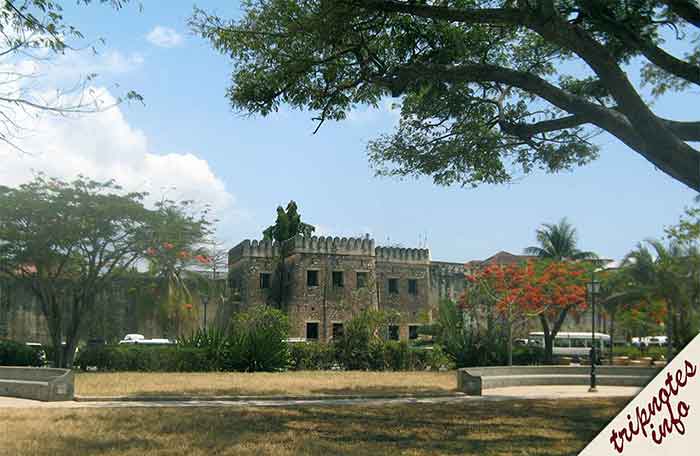
Каменный город Занзибара: Стоун-Таун
Историческую и культурную ценность в городе представляет собой старый центр под названием Стоун-Таун (Stone Town), что в переводе означает «Каменный город». Именно здесь сосредоточены основные достопримечательности и кафе.

О достопримечательностях расскажу ниже, а пока пару слов об организации экскурсий и отелях в Стоун-Тауне.
Как по мне, то на осмотр этого места можно выделить часов 5, не больше. За это время вы успеете обойти основные достопримечательности самостоятельно и с гидом. Но если вы рассчитываете на хороший шопинг, то времени понадобится больше. Посчитаем. Посидеть в кафе — 1-2 часа, экскурсия с гидом — 2-3 часа, шопинг — зависит от ваших потребностей и желания. Итого часов 5-8.
Гида можно найти прямо на улице. Точнее, искать его не придется, он, скорее всего, подойдет к вам сам. По крайней мере, к нам подошел. Я сначала хотела погулять по городу самостоятельно, однако муж решил согласиться на экскурсию — и мы в итоге не пожалели. С гидом у вас будет насыщенная программа с посещением таких мест, о которых вы даже не знали. Например, все додумываются посетить рынок рабов или дом Фредди Меркьюри, но практически никто не знает о панорамном виде на город на одной из самых высоких его крыш или о буддистском храме, который, к удивлению, на Занзибаре есть. Так что не скупитесь: согласитесь на гида. Тем более что услуги его стоят недорого: всего 20-30 долларов.

Стоун-Таун: достопримечательности
Что касается посещения достопримечательностей, то независимо от того, будете вы сами или с гидом, основные знать нужно заранее. Чтобы не забыть их посмотреть.
Первая, по-настоящему культовая достопримечательность Стоун-Тауна, о которой уже было сказано выше, — это дом Фредди Меркьюри. Точнее, теперь это номер в отеле, где когда-то был многоквартирный дом и жила семья Фарруха Булсары (настоящее имя кумира, данное ему при рождении). На этот номер можно посмотреть беспрепятственно, если он будет открыт.

Также обязательным к посещению является рынок рабов на Занзибаре. Здесь вам во время отдельной мини-экскурсии за небольшую плату покажут, в каких нечеловеческих условиях содержались эти несчастные.


Посетите также и знаменитый рынок Занзибара, где можно купить буквально все. Лично на меня он произвел неизгладимое впечатление, наведя настоящий ужас своей антисанитарией. Тучи мух, которые садятся на вяленых осьминогов, фрукты с пола, толпы людей и запахи, запахи, запахи… В общем, мне очень сложно представить, что кто-то там что-то покупает. Однако место очень колоритное и посмотреть на него стоит.
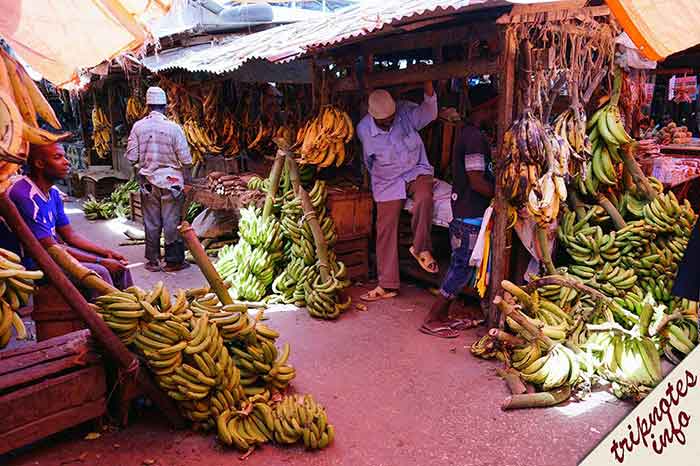
В ходе экскурсии по улицам города гид также показывал нам многочисленные знаменитые занзибарские двери, которые являются целым направлением искусства и до сих пор очень популярны среди богатых людей со всего мира. Каждая дверь — это уникальный шедевр стоимостью несколько тысяч долларов. И таких шедевров на улицах Занзибара много. Причем есть целых три направления в орнаментах: индийское, арабское и собственно занзибарское.

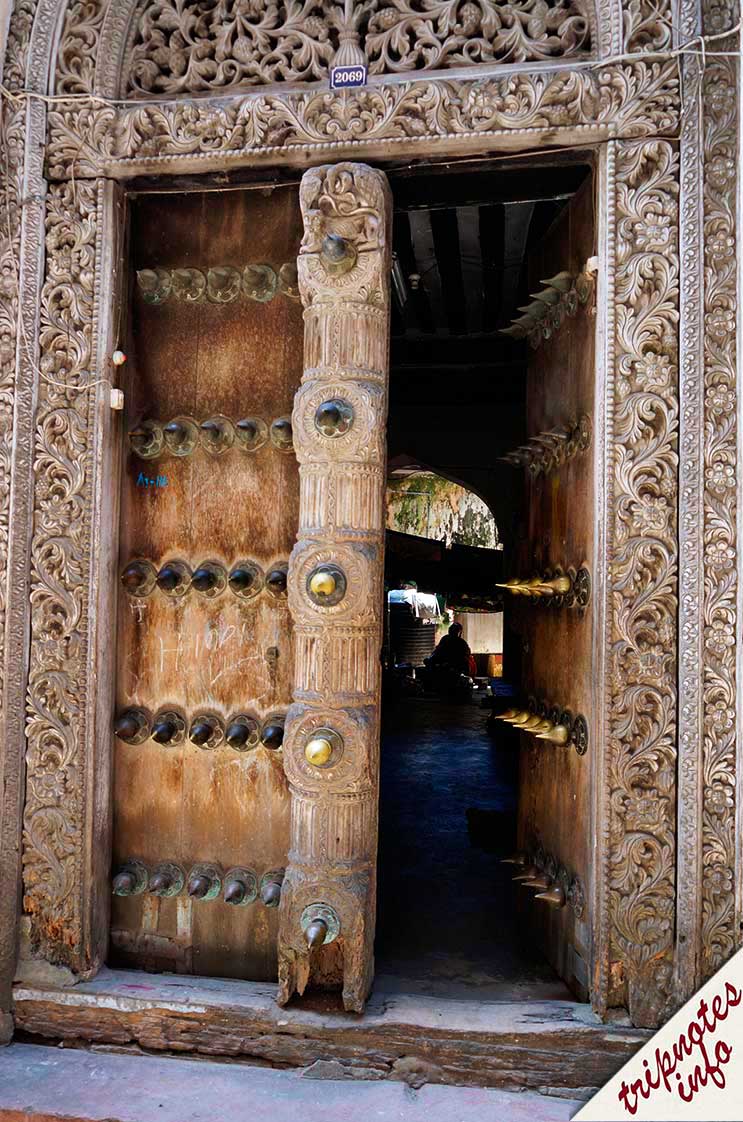
Также при прогулке по городу вы увидите несколько храмов, причем совершенно разных конфессий. Один из них – многолетний долгострой. Очень напомнило нашу страну с ее долгостроями. Вряд ли он когда-то будет готов.
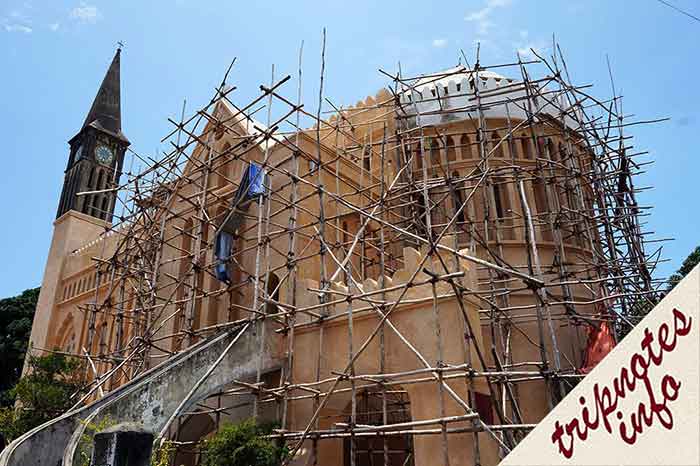
В целом достопримечательности Стоун-Тауна довольно слабенькие. То есть ехать на остров, чтобы их посмотреть не стоит. Сюда едут только за шикарным пляжным отдыхом. И точка. Поэтому-то и останавливаться в отеле непосредственно в самом Стоун-Тауне — непростительный промах. Здесь некрасиво, людно, грязно и нет хороших пляжей.
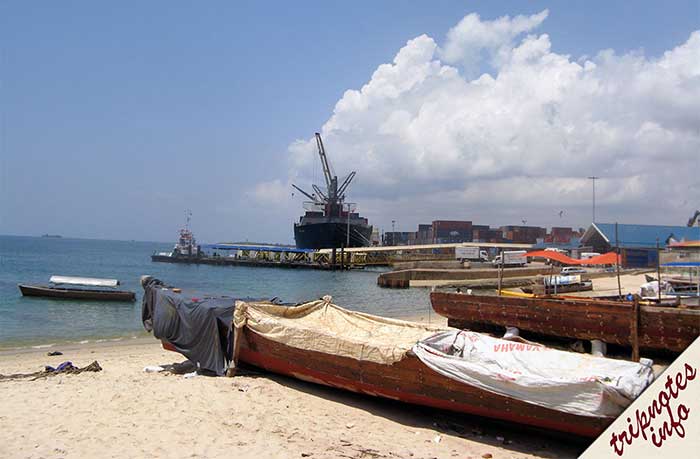
Transportation
Zanzibari «mabasi» waiting for passengers at the Bus Terminal
The streets in Stone Town are very narrow and almost getting anywhere within the town must be done on foot. The narrow streets provide shade and almost everything is accessible from within the town. However, on slightly wider roads historically bicycles and now most recently motor cycles are used to transport people and goods. The town is accessible from Zanzibar and the rest of the region through three possible ports of entry.
The main form of public transport in Zanzibar are the daladala share taxis; and the main station is located by the Darajani Market. Daladalas connect Stone Town to several island locations, such as Bububu (a village north of Stone Town), the airport, the Amaan Stadium, Jangombe, and Magomeni. For longer trips, «mabasi» (Swahili for «bus», singular «basi») are available, which are trucks adapted for passenger transport. The main «mabasi» station is also close to the Market and the «mabasi» network stretch across the entire island and is the cheapest form of long-distance transit.
The main Zanzibar island harbour is in the heart of Stone Town and regular ferries from Dar es Salaam and Pemba connect the town to the mainland. The town is also in close proximity to the Island’s major airport. Zanzibar Airport, 9 kilometres (5.6 miles) south of Stone Town has flights to mainland Tanzania (especially Arusha and Dar es Salaam) as well as other African main airports such as Nairobi, Mombasa, and Johannesburg.
Sleep[edit][add listing]
- Africa House Hotel africahousehotel.com is a historical building dating back to the first generation of old Arabic buildings in Stone Town. Around 1900, it became the English Club for Royal Navy officers. In 1964 the club was taken over by the Tanzanian government. Today the building includes hotel, sunset bar, restaurant, library and a shisha lounge.
- Zanzibar Hotel zanzibarhotel.co.tz is a restored hotel in Stone Town. It was the first hotel to exist on Zanzibar island.
- Furaha Resort 7km from stonetown the way to north of Island,with a nice rooms,sunset view restaurantBasic room single 50us.Double 65us. Standard/twin single 85us. Double 80us. Pool view deluxe single 75us. Double 95us. Triple Deluxe (i king size bed and i single bed) 115us. Check out 10.00am. All taxes are included. Rates quoted above are on per room per night and on bed and breakfast basis.children below 6years old will be allowed free if no extra bed is needed . Extra bed .20us per night. Facilities; swimming pool En suite Bathroom,Ac,hot water,ceiling fan,(only pool garden view rooms offers cable tv and mini bar. E-MAIL; TEL;+255/772279353.
-
Amira’s Roomz, Kiembe Samaki (9km south towards airport), +255777130320. Nice little family run guesthouse just opened near the airport away from the tourist traps. Nice quiet setting with friendly helpful staff. Fan, mosquito net, wi-fi and breakfast included, very cheap. 25usd. edit
Doubletree By Hilton Zanzibar, Stone Town, Zanzibar Town, Zanzibar, Tanzania, +255 24 223 4062, . This refurbished, historical hotel boasts rich and warm décor in a traditional Zanzibari-style and features hand-carved furnishings. The classic rooms offer free WiFi and come complete with air conditioning, a flat-screen satellite TV and a laptop-sized safe. edit
Zanzibar Beach Resort, Mazizini, 2586 Zanzibar City, Tanzania, +255 24 223 6033, . Zanzibar Beach Resort is located in Zanzibar City and features a swimming pool and fitness centre. Guests receive free Wi-Fi access throughout the resort. BBQ facilities are available for outdoor self-catering. edit
Zanzibar Ocean View Hotel, Zanzibar Town, Zanzibar, Tanzania, +255 24 2233882, . Featuring free WiFi and a restaurant, Zanzibar Ocean View Hotel offers accommodation in Zanzibar City, 1.9 miles from Stonetown. Guests can enjoy the on-site restaurant. Free private parking is available on site. edit
Hotel Park Hyatt Zanzibar, Zanzibar Town, Zanzibar, Tanzania, +255 24 550 1234, . Featuring a seafront location in Zanzibar City, Park Hyatt Zanzibar offers an outdoor pool and a restaurant. This air-conditioned hotel comes with free WiFi access and has a spa and wellness centre. edit
-
Kisiwa House, Baghani Street, Stone Town, . checkin: 13:00; checkout: 10:00. New hotel in a nicely restored building. Big rooms, though only the more expensive ones has view of the ocean — the cheaper rooms only have view to the street. High season:165-220$, low:USD110-170. edit
The Seyyida Hotel & Spa (Stone Town Boutique Hotel), Nyumba ya Moto Street Kiponda Stone Town (3 minutes walk from the ferry terminal and 2 minutes from the House of Wonders), +255242238352, . checkin: 14:00; checkout: 10:30. The Seyyida Hotel & Spa Boutique Hotel is located right in the heart of the UNESCO’s World Heritage site, just a short walk from the House of Wonders, Forodhani Gardens and Mgome Kongwe the Old Portuguese Fort. The property is an harvest of peace right in the middle of Stone Town in Kiponda area. This small Boutique Hotel has an inside courtyard, a swimming pool and a breathtaking terrace overlooking Zanzibar Harbour, Stone Town seafront, the historical site of the Palace Museum and Sultan’s grave, this rooftop terrace is an ideal setup for a Sundowner or a romantic candle light dinner. (-6.1600012,39.1889326) edit
Kholle House, Malindi 607/608 (2 Minutes walk to the ferry & Mercury’s), +25 5779779898200, . Kholle House is a unique and historical hotel in the heart of Stonetown. All of it’s 10 rooms are different and special with Ensuite bathrooms, AC and fan. Build in 1860 by Princess Kholle, daughter of the first Sultan of Zanzibar is now one of the most authentic places in Stonetown. a la carte breakfast, swimming pool by the garden, 360 degree views from the terrace 90-190. edit
In the anime
In the anime, Stone Town is located in between the Safari Zone and Cinnabar Island, at the foot of Evolution Mountain. It appeared in The Battling Eevee Brothers.
The one part of Stone Town that sets it apart from other places is the fact that it is a popular place to evolve Pokémon with stones. When Ash and his friends arrived in Stone Town, they came across a party where Trainers from all around were evolving their Pokémon. The party was actually meant for Mikey, the youngest of the Eevee brothers, who had yet to evolve his Eevee. In the end, he decided to keep it the way it was, and the brothers eventually decided it was okay for him to do that.
Mikey’s older brothers also tried to convince Brock and Ash to evolve their Vulpix and Pikachu, respectively. Both declined, saying they couldn’t force their Pokémon to evolve.
Общая информация
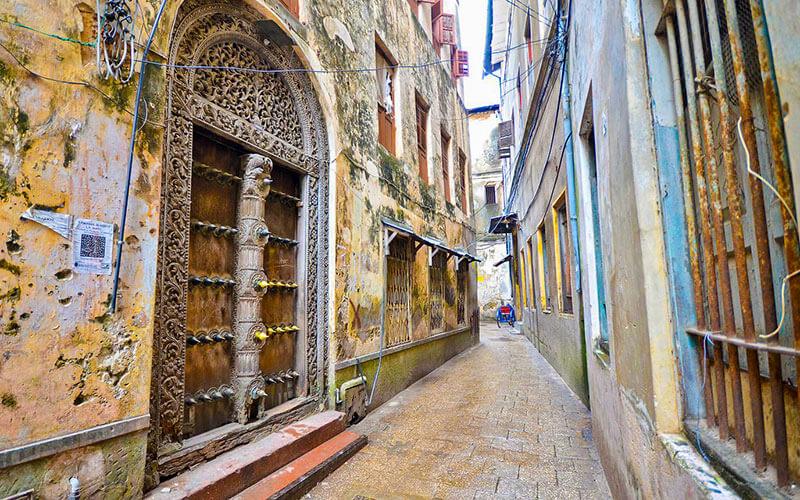
Стоун-Таун является не только столицей Занзибара, но и единственным городом острова. Расположен он в центральной части западного побережья, а назван – в честь каменных строений, возведенных на месте рыбацкой деревни в начале 19 столетия. Численность населения составляет до 200 тыс. чел. Площадь – совсем небольшая, поэтому все достопримечательности можно обойти за пару дней.
Город славится древней историей. Его территория была заселена еще в 16 веке. За долгие годы своего существования она успела побывать во владениях самых разных народов, в том числе и Османского государства. Сейчас же Стоун-Таун является одним из наиболее посещаемых мест Танзании.
Climate
Stone Town along with the entire Zanzibar Archipelago experiences a similar climate throughout the year. The island has a hot tropical weather all year round with the hottest months being February and March and the cooler months being July and August. During most months of the year there is significant rainfall with a long rain season spanning from March-May and a shorter rain season from November-December. The lesser dry season occurs between December-February and May-August and consequently is the peak tourist season month due to beach tourism on the island.
| Climate data for Stone Town | |||||||||||||
|---|---|---|---|---|---|---|---|---|---|---|---|---|---|
| Month | Jan | Feb | Mar | Apr | May | Jun | Jul | Aug | Sep | Oct | Nov | Dec | Year |
| Record high °C (°F) | 35(95) | 38(100) | 38(100) | 34(93) | 33(91) | 32(90) | 31(88) | 31(88) | 32(90) | 32(90) | 36(97) | 34(93) | 38(100) |
| Average high °C (°F) | 32(90) | 32(90) | 32(90) | 31(88) | 30(86) | 29(84) | 29(84) | 29(84) | 30(86) | 31(88) | 31(88) | 32(90) | 31(87) |
| Average low °C (°F) | 24(75) | 24(75) | 25(77) | 25(77) | 23(73) | 23(73) | 22(72) | 22(72) | 22(72) | 22(72) | 23(73) | 24(75) | 23(74) |
| Record low °C (°F) | 18(64) | 22(72) | 16(61) | 19(66) | 18(64) | 19(66) | 18(64) | 18(64) | 14(57) | 14(57) | 15(59) | 16(61) | 14(57) |
| Average rainfall mm (inches) | 53.7(2.11) | 53.9(2.12) | 116.0(4.57) | 178.6(7.03) | 131.8(5.19) | 35.3(1.39) | 29.5(1.16) | 23.9(0.94) | 14.8(0.58) | 52.0(2.05) | 75.9(2.99) | 80.9(3.19) | 846.3(33.32) |
| Average rainy days | 5 | 5 | 8 | 11 | 10 | 4 | 2 | 2 | 3 | 4 | 9 | 8 | 71 |
| Source: MSN Weather |
